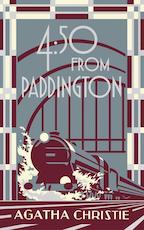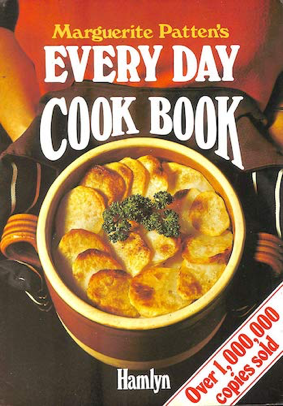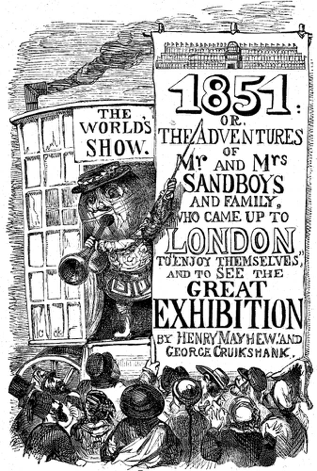
Poirot score: 65
4.50 from Paddington
☆☆☆
Reasons for the Poirot Score
A dramatic early scene, when Mrs McGillicuddy sees a murder a few feet from her but is powerless to intervene, gets this novel off to an excellent start, and plays well in the film and TV adaptations. Lucy Eyelesbarrow is an interesting variation on the Christie young female adventurer: a domestic goddess with a first class maths degree from Oxford. Miss Marple directs the action but is herself sedentary – more Mycroft than Sherlock Holmes. Some of the misdirections are good but the clues few and poor and several solutions are plausible.
Click here for full review (spoilers ahead)
Trivia
Canapés Diane
“…Who cooked the dinner?” “I did,” said Lucy. And what was it? In detail.” “Mushroom soup. Curried chicken and rice. Syllabubs. A Savoury of chicken livers in bacon.” “Canapés Diane,” said Dr Quimper unexpectedly.
Chapter 19
The word canapé began life, in Ancient Greece, as mosquito. The word was incorporated into the Greek word for a bed or couch surrounded by curtains that acted as a mosquito net. The word entered the Romance languages, including French, referring to a couch. The word also entered the English language, as canopy, referring not to the couch but to the curtains around and above the couch, hence the idea of the canopy of a tropical rain forest.
The culinary sense of canapé developed in France in the eighteenth century to refer to a mouthful of savoury topping (made from fish, meat, or vegetables) sitting on a ‘couch’ of bread (often toasted or fried). A canapé might be served hot, or cold and was generally, in France, served at the start of the meal as an hors d’oeuvre. The word crossed the channel into Britain in the late nineteenth century both in the culinary sense and as meaning ‘couch’. The culinary sense was used, for example, by Mrs Beeton in 1890. The English word canopy also crossed the channel but in the opposite direction, and became the French word canopée referring particularly to the canopy of a rain forest. The word, in short, is like a plait: two strands part from the Greek origin and then cross over.
Canapés are often square or round in shape but might be any (fairly regular) shape. The important crucial defining point is that they are small – just one mouthful, or at most two. As they enlarge they turn into open sandwiches.
In France, canapés were developed as hors d’oeuvres and eaten at the start of the meal as ‘appetizer’. The British, unlike the French, had a tradition of The Savoury eaten at the end of a meal as ‘digestive’. Lucy Eyelesbarrow is following this tradition in serving a ‘savoury of chicken livers in bacon’. Whether these were in fact canapés as Dr Quimper suggests (and Lucy agrees) is not clear as we do not know their size, nor whether the savoury was on a couch of bread.
Constance Spry writing in 1956, a couple of years after the publication of 4.50 from Paddington, has this to say about the after-dinner savoury.
“This course, which used inevitably to follow the sweet course in my young days [she was born in 1886, a few years before Agatha Christie], sometimes now takes the place of this, particularly for those whose taste lies in a savoury direction. … Many after-dinner savouries resemble cocktail savouries and sometimes they resemble hors-d’oeuvre, but they are more substantial in size.” [The Constance Spry Cookery Book by Constance Spry and Rosemary Hume 1956 and 1972 Pan Books Ltd.]
Constance Spry does not include canapés in the section on hors-d’oeuvre perhaps because she finds the addition of bread too much for what is intended to be an appetizer, but she does include caviare on either toast or, better, blinis (small pancakes made with yeast) as a dish ‘of the hors-d’oeuvre type’ and as ‘suitable for serving as the single dish for a first course of a luncheon or dinner’. She provides several recipes for canapés but these are in the section on cooking for cocktail parties and not as part of a meal.
On the other hand Ambrose Heath, another stylish writer who wrote for the Manchester Guardian (now simply The Guardian) in the 1930s, wrote:
“Indeed, the canapé, or savoury on toast, the varieties of which are innumerable, is an excellent form of this kind of hors d’oeuvre. You can surmount your fingers of toast with smoked cod’s roe, with scrambled egg sprinkled with cheese or criss-crossed with thin strips of anchovy, or with a purée of smoked haddock.” [Good Food by Ambrose Heath, originally published 1932 by Faber and Faber]
Helen Jerome also includes canapés variés in the section on hors d’oeuvres in The Fine Art of Cooking (1935 revised 1942), a manual of mainly French cookery recommended to British ‘teachers, to housekeepers and to cooks, indeed to all who desire to provide their households and guests with fare which is attractive as well as wholesome’.
Since the Second World War, Constance Spry’s approach seems to have been dominant in Britain. Canapés have, in my lifetime, rarely been a part of meal either at the beginning or the end. They have, however, been popular at formal receptions and drinks parties, and still are. When I asked a friend recently what she understood by the word her reply was: ‘a horribly soggy small bit of bread with tasteless caviar or a tiny amount of smoked salmon on top served, with over-sweet sparkling wine, at the end of a conference when what you actually want is a decent meal and an early night.’
Canapés have, at least in Britain, recently come back as the beginning of a meal, in a small way, particularly in rather self-conscious restaurants, in the form of the amuse bouche or amuse gueule.
I do not know from where Christie learned about Canapés Diane. Christie was a keen cook. It is seems likely it was from Marguerite Patten who was perhaps the first British celebrity media chef (or home economist as she sometimes preferred to be known). Patten began radio broadcasting during the Second World War and first appeared on television in 1947. In addition to her media work she wrote around 170 cookery books many in a series of ‘500 recipes’. In her encyclopaedic and best-selling Marguerite Patten’s Every Day Cook Book, first published in 1968, there is a recipe for Canapés Diane. This is in the Savouries section and not amongst the Hors d’Oeuvre. The recipe is chicken livers cut in half, seasoned, and flavoured with lemon juice, each liver wrapped in a half rasher of streaky bacon, held in place with a cocktail stick and then grilled (heat from above) until the bacon is crisp. Each piece is served on a tiny finger of hot buttered toast. It seems likely that Patten had either published the recipe in an earlier book – before 4.50 from Paddington was written – or had given it on radio or TV. I can find no information about how this dish came to be called Diane. Diane (in English Diana) is the Roman God of hunting and dishes from the meat of hunted animals (such as deer) sometimes acquire her name. Unless Canapés Diane were first created from wild boar (or the chickens were unusually feral) that origin seems unlikely. Perhaps Diane was the name of the cook, or a loved one of the cook, who invented, or came to name the dish.
Marguerite Patten died in 2015 at the age of 99 years.

Sand boys
Now, if only it [the house] came to Alexander, he and I would be as happy together here as a couple of sand boys
Chapter 21
The phrase is ‘as happy [or jolly] as a sandboy’. Usually, now, sandboy is treated as one word or as hyphenated (sand-boy) and only rarely as separate words (sand boy).
A sand-boy is thought to mean a boy who ‘hawks sand for sale’ (Oxford English Dictionary). In the nineteenth century sand was used as a floor covering (rather like sawdust is sometimes used now) to absorb spills, for example in an inn or a butcher’s shop. The sand-boy would bring the sand to the inn and perhaps sweep up and take away old sand. The earliest example of its use in the Oxford English Dictionary is from 1821: “ Logic [referring to ‘Bob Logic an Oxonian’] appeared to be as happy as a sand-boy, who had unexpectedly met with good luck in disposing of his hampers full of the above-household commodity [presumably sand] in a short time …’ A further example from a dictionary in 1823: ‘Sand-boy, all rags and all happiness; the urchins who drive the sand-laden neddies [donkeys] through our streets, are envied by the capon-eating turtle-loving epicures of these cities. ‘As jolly as a sand-boy’ designates a merry fellow who has just tasted a drop.’ These quotations suggest two reasons why sand-boys should be happy: either they come upon good luck, for example by finding dropped coins, when they cover the floor with sand; or their happiness is brought about by the free alcohol the inn-keeper gives them in part payment for the sand.


